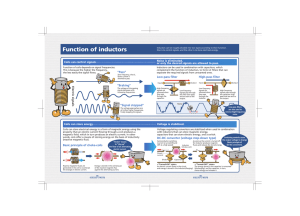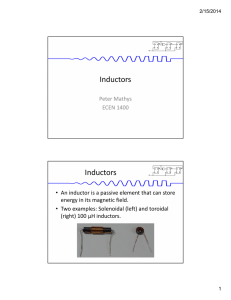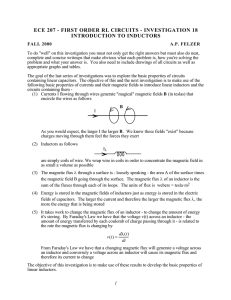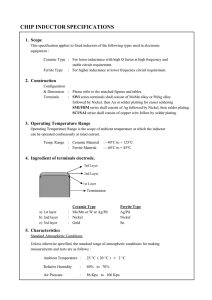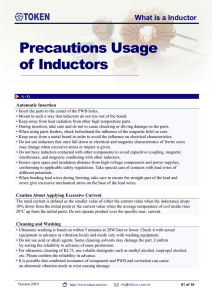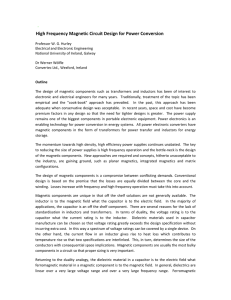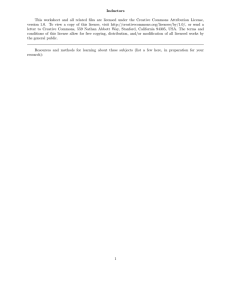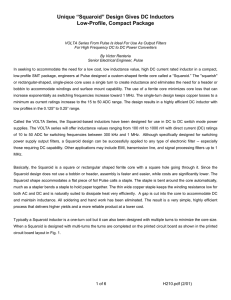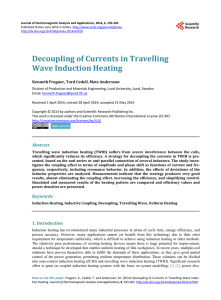Lecture
advertisement
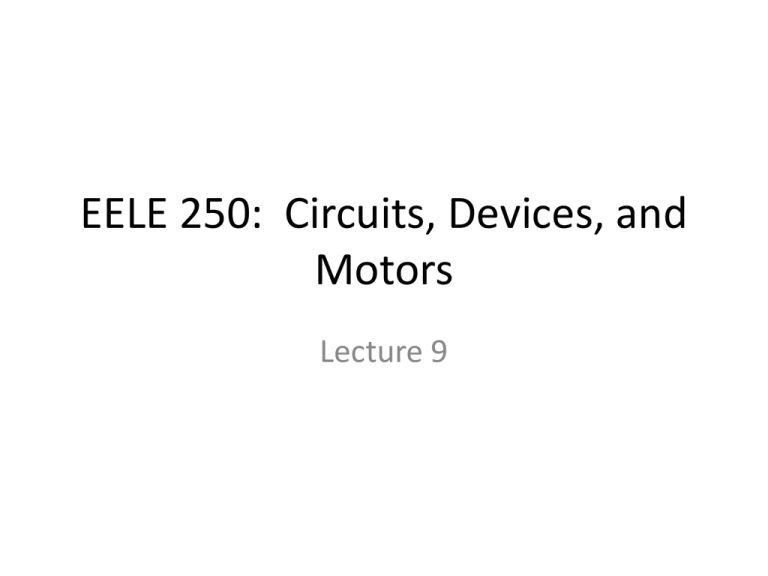
EELE 250: Circuits, Devices, and Motors Lecture 9 Assignment Reminder • Read 3.4 - 3.7, AND 4.1 - 4.3 • Practice problems: – P2.57, P2.59, P2.88 <--note that these involve controlled sources – P3.6, P3.7, P3.8, P3.11 • D2L Quiz #4 by 11AM on Monday 26 Sept. (The quiz will be posted soon). • REMINDER: Lab #3 this week will require a formal lab report due at the start of your lab session during the week of October 3. There will be no lab during the week of September 26, although the lab TA (Nick Havens) can let you in to do any follow-up measurements that are needed for Lab #3. Inductors • An inductor stores energy in a magnetic field. Current through the coil acts like an electromagnet. A typical inductor has a coil of wire around an iron core. Inductors (cont.) • Rather than storing charge like a capacitor, think of an inductor as having “current inertia” Inductance • Inductance is measured in Henrys [volt seconds per amp] di v(t ) L dt t 1 i (t ) v(t )dt i (t0 ) L t0 Parallel and Series • Inductors in parallel have the same voltage but different currents, so they add reciprocally (like resistors). Parallel and Series (cont.) • Inductors connected in series share the same current, but have different voltages, so they add directly (like resistors). Important Rules of Thumb • It takes time to change the voltage on a capacitor, because we have to wait while enough charge is delivered or removed by the current • It takes time to change the current through an inductor, because the magnetic field must be increased or decreased • Forcing a capacitor to change voltage quickly requires a BIG CURRENT: dv/dt = i·(1/C) • Forcing an inductor to change current quickly requires a BIG VOLTAGE: di/dt = v ·(1/L) Summary and Review • • • • Inductors store energy in a magnetic field v = L di/dt i= (1/L) integral v dt Inductors in parallel add together reciprocally, like resistors in parallel. • Inductors in series add directly, again like resistors in series.


